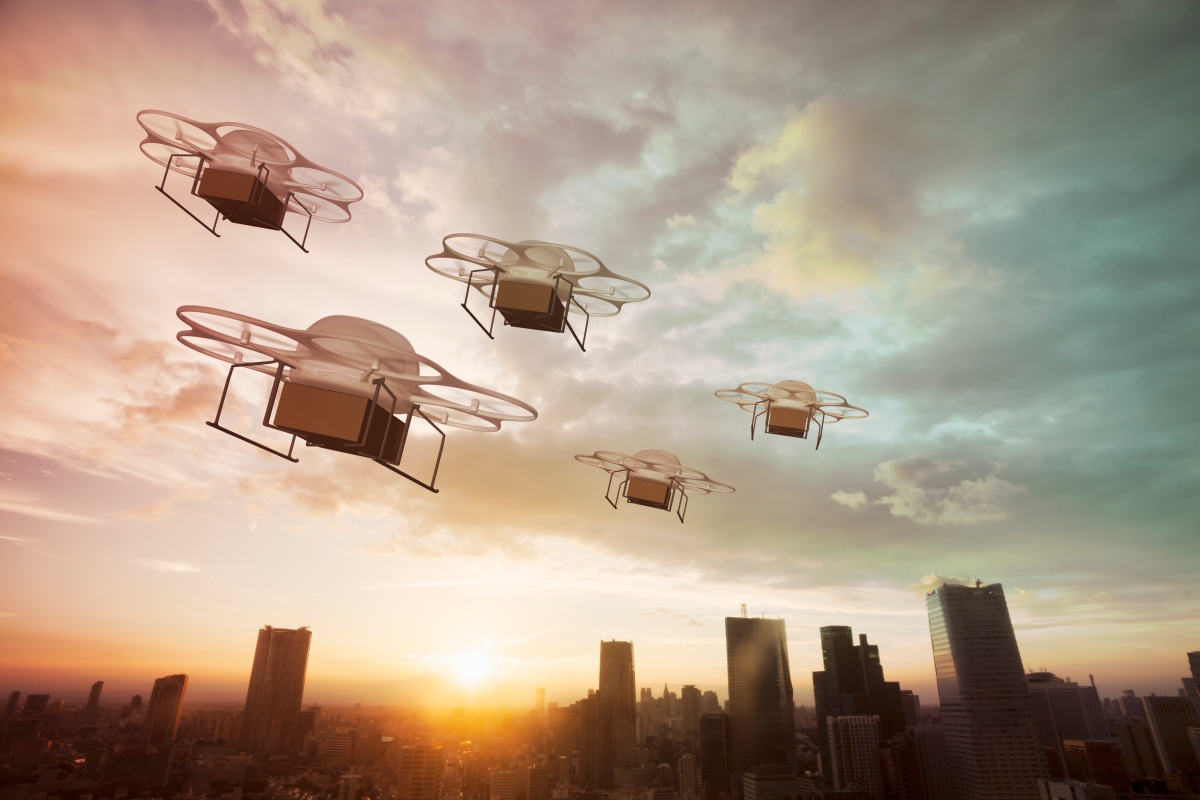It’s year five, or maybe ten, of “drones are going to revolutionize transport” and so far, we’ve got very little to show for it. Maybe it’s time to put these foolish ambitions to rest and focus on where this technology could actually do some good, rather than pad out a billionaire’s bottom line or let the rich skip traffic. The promise of drone deliveries, drone taxis, and personal drone attendants has never sat, or rather floated, right with me. There’s so little to be gained, while braving so much liability and danger, and necessitating so much invention and testing. Why is anyone even pursuing this? I suspect it is the Jetsons-esque technotopianism instilled in so many of us from birth: It’s only a matter of time and effort before we have the flying cars, subliminal learning pillows, and robot housekeepers we deserve, right? It feels like because we have things that fly, and things that can navigate autonomously, we should be able to put those things together and make delivery drones and air taxis. Just have to wait for the right genius kid building the future out of their garage, with the help of your friendly neighborhood VCs. Of course it’s not quite that easy. And although the Jetsons mentality explains our acceptance of the development of these technologies — unlike others that we disapprove of for their impracticability, cost, or ethics — it doesn’t really explain why a company like Amazon is spending hundreds of millions of dollars to pursue it. The answer there, fortunately, is as clear as why Amazon does anything. To paraphrase Dr Johnson: “Sir, no man but a blockhead ever [spent a decade trying to build an autonomous drone delivery network], except for money.” That’s certainly the case with drone delivery. Amazon has made no secret of its intention to take over the logistics and delivery industry bite by bite, partly through sideways subsidy from other parts of its lucrative, mutually buttressed businesses, and partly with a punishing franchise model that offloads risk and liability onto contractors. That said, the end goal is, as in its warehouses, to replace those flesh and blood workers with tireless automatons. The best evidence for this is that Amazon’s warehouses already treat workers as if they are components in a machine, so it’s just a matter of swapping out a worn out part with another, more reliable part that doesn’t try to unionize. Same with delivery. High hopes Image Credits: Amazon But in the last-mile world, drones are kind of a funny idea. Certainly it has its merits: many packages are small and light and a drone could skip traffic or travel in a straight line over residential blocks to cut hours off delivery times. But that’s before you reckon with any of the actual needs or restrictions of the logistics world. To begin with, drones wouldn’t even cover the last mile — more like the last few hundred meters. Part of the reason for this is regulatory; it’s extremely unlikely that Amazon could procure a permit to fly its drones over all the private property in a city. The liability is just too damn high. Sure, you can do some sweetheart test markets in a random suburb, but good luck convincing urban areas to let commercial drones infest their skies at all hours. So what are they going to do, fly along the streets? High enough that they don’t hit any wires or trees? Carrying a 1-pound package? Only at certain hours? It isn’t particularly efficient! And then, the first time one of those packages or drones drops out of the sky and cracks a windshield next to a grade school, those drones are done in that city, and probably every other city. Done! Even if they could guarantee no accidents, no one wants those things flying around their neighborhood. Best case scenario is: fucking annoying. Drones are pretty loud, and it’s not even the kind of loud you can get used to, like the dull roar of a freeway a few blocks off. No, drones make the most annoying sound in the world short of Jeff Bezos’s laugh. Small ones, big ones, they all sound horrible. There are advances to be brought to bear here, but really, when you have 4 to 8 little rotors spinning at however many thousand RPMs and moving the necessary air downwards to lift a couple dozen pounds of body and payload, you tend to create a certain amount of truly obnoxious noise. That’s just the physics of the thing. If we could make helicopters quiet we would have done so by now. Even if we allow these drones dominion over the air and let them fly with impunity, they’re laughably limited. Where do packages go normally? In a big clearing in your building’s courtyard? On the roof? No, they go to the lobby, which locks, or perhaps in a parcel box… which locks. As commerce has moved online, parcel delivery has skyrocketed, and so has parcel theft. Imagine if a package made a really loud whining noise wherever it went then was guaranteed to be left out in the open somewhere. It’s a really frictionless experience for the criminals, at least. Image Credits: Walmart A drone can’t ring a doorbell or buzz your apartment (unless you hook it into your smart home infrastructure — best of luck with that). It doesn’t have a key to the lobby. It can’t ask you for a signature. Cities are diverse and complex physical environments with a wide variety of obstacles, methods, and requirements for making a package go from here to there in a safe and satisfactory way. We haven’t figured out how any robot can successfully deliver something without the recipient coming out to get it immediately, and doing it from the sky is even harder. Air-dropping is one of the worst possible ways (outside of combat) to deliver anything, only slightly better than yeeting it over the fence — admittedly common,



